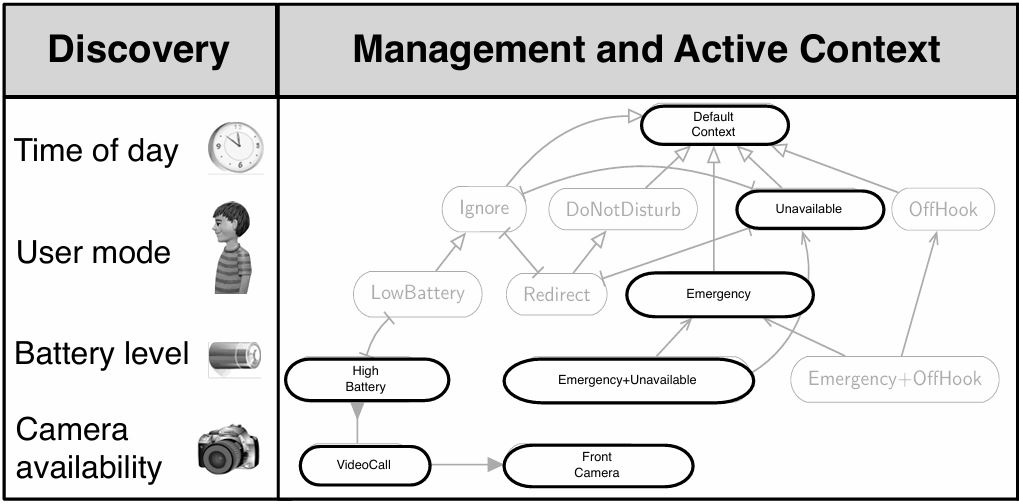I. Introduction
In adaptive systems, components often respond dynamically to changing contexts—whether these contexts are time-based (e.g., day and night cycles) or resource-driven (e.g., fluctuating energy availability). However, most modeling languages, including Modelica, lack support for Context-oriented Programming (COP), a paradigm for modular, flexible, and adaptable system behavior. COP allows models to adapt to contexts dynamically. It simplifies context definition (e.g., when DayMode.isActive then ...), reducing the need for cumbersome if/else statements and complex when clauses, enabling efficient variability management.
COP allows for variability to be managed via context and its state, as shown in the following diagram from Cardozo, Nicolas, et al. "Context petri nets: Definition and manipulation." (2012).

The benefits of COP include:
- Separation of Concerns
- COP separates core logic from context-specific adaptations, keeping components clean and focused.
- Modularity and Reusability
- Components can be reused in different contexts without changes, making them flexible and adaptable.
- Easier Maintenance and Scalability
- Context-specific logic is isolated, making systems easier to update and expand.
- Improved Readability and Understandability
- Centralized context definitions make the code clearer and easier to understand.
However, most modeling languages do not support COP natively. Context-oriented Petri Nets (CoPN) bridges this gap by bringing COP principles to Modelica, enabling developers to build flexible, context-aware models with ease.